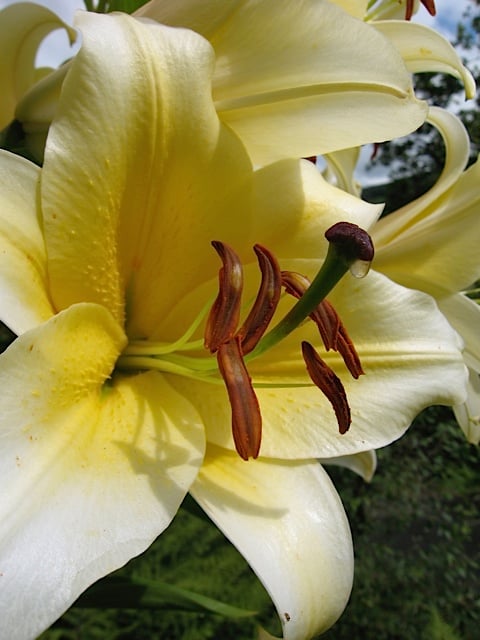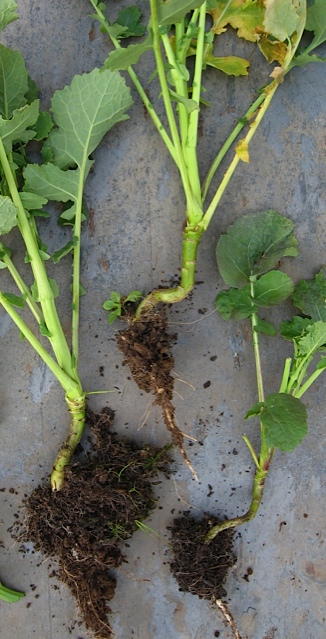The RHS Award of Garden Merit is under review – so perhaps we should take the opportunity to raise the bar on what we mean by ‘merit’.
A recent episode of ‘Gardeners’ Question Time‘ (GQT) on Radio Four aired one of the most mind-numbing segments I’ve heard in a while. Although it was some relief from the programme’s often banal and occasionally unseemly banter, the ‘expert’ discussion about Award of Garden Merit or ‘AGM’ plants took the programme’s calmative properties to new heights. Even the audience seemed to be nodding off.
The Royal Horticultural Society (RHS) bestows its AGM, via UK-wide growing trials and assessments by panels of expert judges, on those plants deemed to ‘perform reliably in the garden’. To gain the AGM – identified by the trophy symbol found on plant labels and seen in seed and plant catalogues – a plant must be a ‘good doer’ in most situations, be stable in growth habit and colour, be healthy and reasonably resistant to attack by pests or diseases, and be easy to get hold of. The yawn-inducing GQT discussion explored, among other things, how the AGM system is currently under review, and how mere mortal gardeners might be able to contribute to its development. Reassessment – which will become more frequent – means that plants can subsequently lose the AGM; there are currently over 7000 on the list. It is undoubtedly a valuable pointer for gardeners, especially new ones, particularly those keen to grow food.

What would have made the discussion less stultifying would have been the suggestion that perhaps an AGM could start encompassing much more than whether a plant will simply grow well for us. How well does it perform, for example, for non-human garden inhabitants, such as insects and other wildlife species (which are usually abundant where growing trials take place)? We’re well-endowed with basic lists of ‘bee plants’, but how about advice on how many of them have real staying power when it comes to pumping out pollen and nectar? (The fact that the RHS has trademarked its ‘Perfect for Pollinators’ logo and promotional material is perhaps a clue to where much of the effort has gone.) Or how about an assessment of how well different plants enrich and improve the soil’s ecosystem – although ‘super for subterraneans’ doesn’t have quite such a catchy ring to it. I can’t find any soil-building green manures with an AGM, but in my garden they’re plastered with winners’ rosettes.
The more we broaden the basic idea of giving plants a meritorious award, the more interesting it becomes. The idea soon shifts from being solely about how well a plant will do for you, to being about how that plant might enrich (or impoverish) the world around you. A logical sideshoot from here is to start pondering what ripples the plant (or seed or bulb) has sent out in reaching the point at which we buy it; can we start to highlight merit along the whole chain of events that goes into its making?
What about how, where and by whom the plant has been grown? What kind of compost has it been propagated and raised in: bog-destroying peat or nature-saving peat-free? Has it been routinely treated with persistent, polluting pesticides, some of which might still be pulsing around its system when we buy it (think neonicotinoids), or is it organically certified? Has it been raised in a heated, energy-intensive greenhouse, or in the eco-friendlier outdoors? Has it been grown by a local, regional, national, or international grower, and how far has it travelled – across counties or continents – to land in your trolley? What were the working conditions like for the people who nurtured it; did they get treated well and earn a fair living in safe, secure communities, without exposure to hazardous pesticides? Broadening the scope of what we mean by ‘garden merit’ sets us free to think more widely about a topic that’s so often tagged, with grudging reluctance, onto the rump of gardening discussions – our life-supporting environment.
This more holistic approach to assessing a plant’s merits is crying out for a fresh monicker: one showing that its recipients are both reliable garden performers and all-round ‘good doers’ in terms of the environmental impact of actually getting them onto the garden centre bench, or through your letterbox. We don’t need to reinvent the wheel, but adding an extra green spoke gives us the Award of Environmental Garden Merit, or AEGM. Logo-wise we can ditch the trophy; I’m imagining a picture of the earth cosied inside a symbolic greenhouse, to capture gardening’s gentle yet powerful potential to ease some of the pressure on the world around us.

There are already natural takers for the AEGM: seeds, plants and bulbs grown to organic standards (where the chain of events in their production is usually transparent); plants with proven pollen- and nectar-appeal to a wide range of insects, not just bees; vegetable and fruit varieties which brush off pests and diseases (this would be an upgrade for those already holding the RHS’s AGM); and those soil-enhancing green manures. AEGM plant wannabes would need to clear the hoops of having created minimal environmental impact on their journey to our shopping baskets, with each step being documented, verifiable and accessible. How about a QR code on the back of the (fully compostable) label? Truth-showing technology is a finger-tap away, so let’s use it.
But why stop at awarding the AEGM just to plants, when it’ll work just as well for gardening tools and products? Again, there are already some obvious awardees: quality peat-free composts; pots and seed trays made from recycled (and then recyclable) plastic; mail order packaging that’s 100% compostable; wildlife ‘hotels’ that actually work; and tools and products made from natural, renewable (and repairable) materials, such as wood. Many of the imported products on sale in garden centres are crying out for closer scrutiny as to their origins; the AEGM’s emphasis on ethical, fair-trade business practices would oblige. And why stop there? By giving their businesses a root-to-shoot green rethink, garden retailers, off- and online, could aspire to the AEGM themselves. What kudos that would be to help attract a new, younger, and more inquiring and earth-savvy generation of gardeners.
Doesn’t this all sound a whole lot more interesting, let alone more directly relevant to the environmentally-stretched times we’re gardening in? Wouldn’t it be good to know that what we buy for our gardens has got there via the greenest journey possible, doing little harm to people or planet along the way? It would certainly help fire up more curiosity about, and closer inspection of, the industry that serves our desire to grow things. It could court controversy, and encourage gardening businesses to look beyond making a profit regardless of the environmental cost. It would inject some much-needed energy into how we talk – on TV and radio, in print and online – about gardening’s interwoven relationship with the world around us. And it would make a cracking topic for discussion on ‘Gardeners’ Question Time’.
Text and images © John Walker


